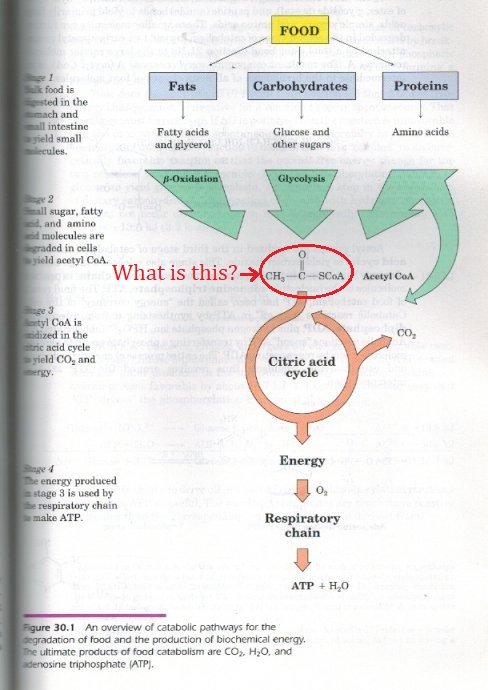-
Posts
139 -
Joined
-
Last visited
Recent Profile Visitors
The recent visitors block is disabled and is not being shown to other users.
Agent Smith's Achievements

Baryon (4/13)
3
Reputation
-
Gracias all
-
This is more likely a question in biophysics but there's no such category in the forum and I (probably mis)judged it best to post in the physics forum. I remember holding a very small metal ball bearing in my palm and feeling its weight, heavy I thought. Then on another occasion I recall holding a piece of wood in my hand, light. I know that its weight, dependent on mass, that we sense. To be held up we need to exert muscular force and we feel the strain in our muscles. I was just thinking about this a while ago and realized that the ball bearing being spherical has a smaller area of contact with my palm compared to the chip of wood (flat). Immediately pressure popped to mind. The ball bearing's weight was distributed over a smaller area compared to the wood chip and although my money is on the difference in the sensation in my hands being explicable by mass (wood is lighter than metal), I was wondering if pressure too was being sensed.
-
@CharonY, verum, there's that risk, with dangerous consequences, of oversimplifying an actually complex process. I was just checking if there's any link between infections and 1) all diseases in general, 2) cancer and 3) autoimmune disorders. You will agree that there's at least an association. it'd be fabulous if all diseases were infections. All we'd need to do is develop more antibiotics, they'd be the magic bullet - the Holy Grail of pharmacology.
-
Si, I'm painfully reminded of the multifactorial nature of etiology. Do you know how viral illnesses are handled by the immune system? One way is to trigger apoptosis so that virion load is reduced. Another way is to go "autoimmune", let the WBCs destroy (infected) cells, Both? Come to think of it a viral infection is uncannily similar to malignancies (in both cases, we have a genetic problem and in both cases, there's serial mutations, and in both cases we have to attack rogue cells) There's no harm in discussing the question on fora like this; we're not submitting a paper for publication where being right is crucial.
-
Glad that we see eye to eye on the issue, even if half-heartedly. This isn't an assumption (re: Covid-ACE II receptor link). How so? Anyway, mine is just a weak hypothesis, relatively speaking. A few cases where we see even a shadow of a link (between infection and so-called autoimmune disorders) should provide us a something to work on.
-
My interest in Paul W. Ewald's hypothesis piqued when Covid-19 researchers discovered the virus was binding to ACE II receptors (hypertension). Could hypertension be caused by an infection? was the question that crossed my mind. Very unlikely, but you never know. That's the most recent update to my Paul W. Ewald file. Too, I'm a bit suspicious about so-called autoimmune disorders - maybe the immune system's attacking infected tissue and there's always collateral in a war, which it is, oui? Je ne sais pas.
-
Why can't we just present the tumor antigens to the immune system, that's the way a normal vaccine works. No extra step involving genetic engineering is necessary. When we make a vaccine against microbes, we kill them and extract the immunogenic antigens and inoculate the patient, simply stimulating the immune system to mount a response. Of late I'm inclined to believe Paul W. Ewald's every disease is an infection hypothesis. So, at the root of cancer is also either a known/unknown infection. If so we can create vaccines much easier and safer than interfering with genes. The catch though is to identify the offending organism.
-
\(y = x^2 \)
-
Ok. What we have to focus on is the 2 electrons? 2e-? Yes, a (redox) gradient, but what exactly does that mean? A gradient of increasingly more "electron-philic" compounds? Are you saying the chain of redox reactions are thermodynamically favored? Can you explain this a bit more? NADH is the electron donor, oui? Hence it depletes as the TCA cycle is activated? We would need more NADH to sustain the reaction and so there's got to be a way to replenish the stock of NADH. This is achieved (ultimately) via oxygen??? I suppose it's not a question of either this/that, but more of which reaction dominates a particular set of circumstances. Gracias.
-
@studiot, well-above my paygrade. Interesting book though. I did a quick google search, the CoA unfolds into a complex ring structure (like the one in your illustration). Gracias. Good day.
-
I'm glad you see progress in our discussion. You're on the mark as to how science has to be conducted. Do you mean to say James Lovelock did science backwards? He was a chemist and these come in various flavors and I know next to nothing about which tier of chemists he belonged to. Coming up with a globally impactful hypothesis like Gaia suggests he was not just any chemist. Do you have anything on him that suggests his work was shoddy? Please review your diagram of energy production in a cell. I have a question in red. It's Acetyl CoA (from Google), right? Also, which book is that? Is it a downloadable PDF?
-
-
I don't recall seeing C2H5OH in human biochemistry except as alochol-induced hepatitis, but I do know about how alcoholics are susceptible to malnutrition because of the calories they get from alcohol, which spoils their appetite, making them skip meals, the usual way nutrients enter the body. I also don't get why fermentation and its product alcohol was brought into the discussion. @CharonY So, looking for confirmation here ... 1. NADH comes from NAD+ 2. NADH drives the electron chain (that generates ATP/some other energy molecule) 3. In respiration, during the final stage the electron gets transferred to oxygen and we replenish our NAD+ 4. In anaerobic conditions, NADH is converted to NAD+ via fermentation, C2H5OH being a byproduct. Is that why we have to seal the container when we make alcohol?
-
Si, that seems to be the case and I don't know how exactly fermentation works (I was told it's partial respiration/oxidation. Do you know?), but it's an apropos example for reactions that come to an end because it's unsustainable ... as far as I can tell. Do you have other examples? Sorry the link to the song is broken, must be a good song. That's correct. No need to respond. That's correct, underwater vents, the human gut, volcanoes and even hot springs have their own microbiota; photosynthesis ain't the only game in town. However, do you have more ... put some meat on the outline you've provided of how TGH is untenable or at least per the chemical reactions you've cited and other non-oxygen dependent chemical interactions you mention ... wrong?
-
@studiot, Je ne sais pas. The sulphur-based reaction, my guess is, was not sustainable and collapsed. Not exactly an intermediary stage towards the photosynthesis-respiration system we have, but more like a dead end. What say you?



